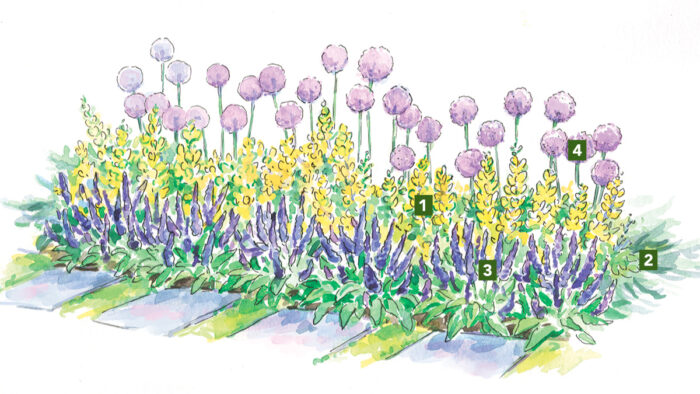
In her article “Spring Planting Ideas,” Michelle Gervais beautifully illustrates the magical time that is the start of spring: “Our winter-weary spirits lift as hints of green begin to appear. We notice even the smallest patches of snowdrops and crocuses as we drive by at 55 miles per hour. The first daffodil sighting is a thrill, and tulips are almost too colorful to bear. The pale chartreuse haze in the trees seems to change to lush, vibrant green overnight, and every new sprout brings delight. It’s the start of another exciting season, and the potential and possibilities for our gardens seem boundless.”
While spring is often a flurry of planting, planning, and performing the many garden chores in between, it’s always a treat to have some plants that will kick off the season with color while others are still waking up and waiting for warmer weather to show off their best. This spring planting plan was crafted by regional expert Adam Glas and would be a spectacular addition to any Mid-Atlantic garden.
1. ‘Lemon Meringue’ baptisia
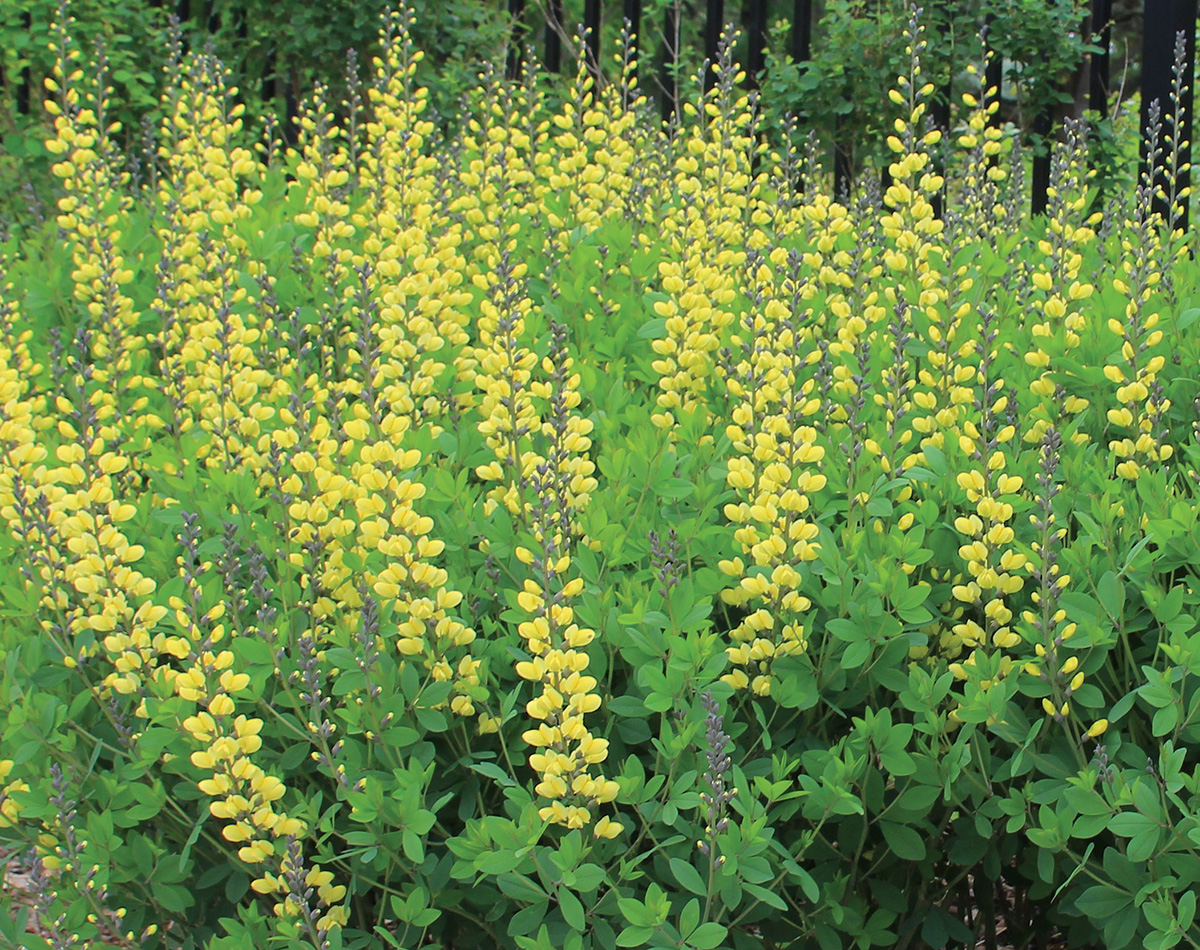
Name: Baptisia ‘Lemon Meringue’
Zones: 4–8
Size: 2 to 3 feet tall and wide
Conditions: Full sun to partial shade; medium to dry, well-drained soil
Native range: Hybrid of Texas and Oklahoma native species
Few other late spring–flowering plants can match the visual appeal of this statuesque perennial. Asparagus-like charcoal-colored shoots emerge in early spring. Vibrant yellow flowers follow in late spring, contrasting beautifully with the bluish green foliage. This baptisia thrives with little care or maintenance. It has a vigorous root system with taproots, so site it appropriately and avoid transplanting. It prefers lean soil; if too much fertility is provided, a support may be needed to prevent flopping. Alternatively, after flowering it can be cut back to ground level; new foliage shorter in stature then will emerge. Avoiding the cutback is ideal due to the showy black seedpods that provide additional late fall and winter interest. ‘Lemon Meringue’ is pest and disease free, drought tolerant, salt tolerant, deer resistant, and pollinator friendly. It also makes for an excellent cut flower.
2. ‘Grey Owl’ eastern red cedar
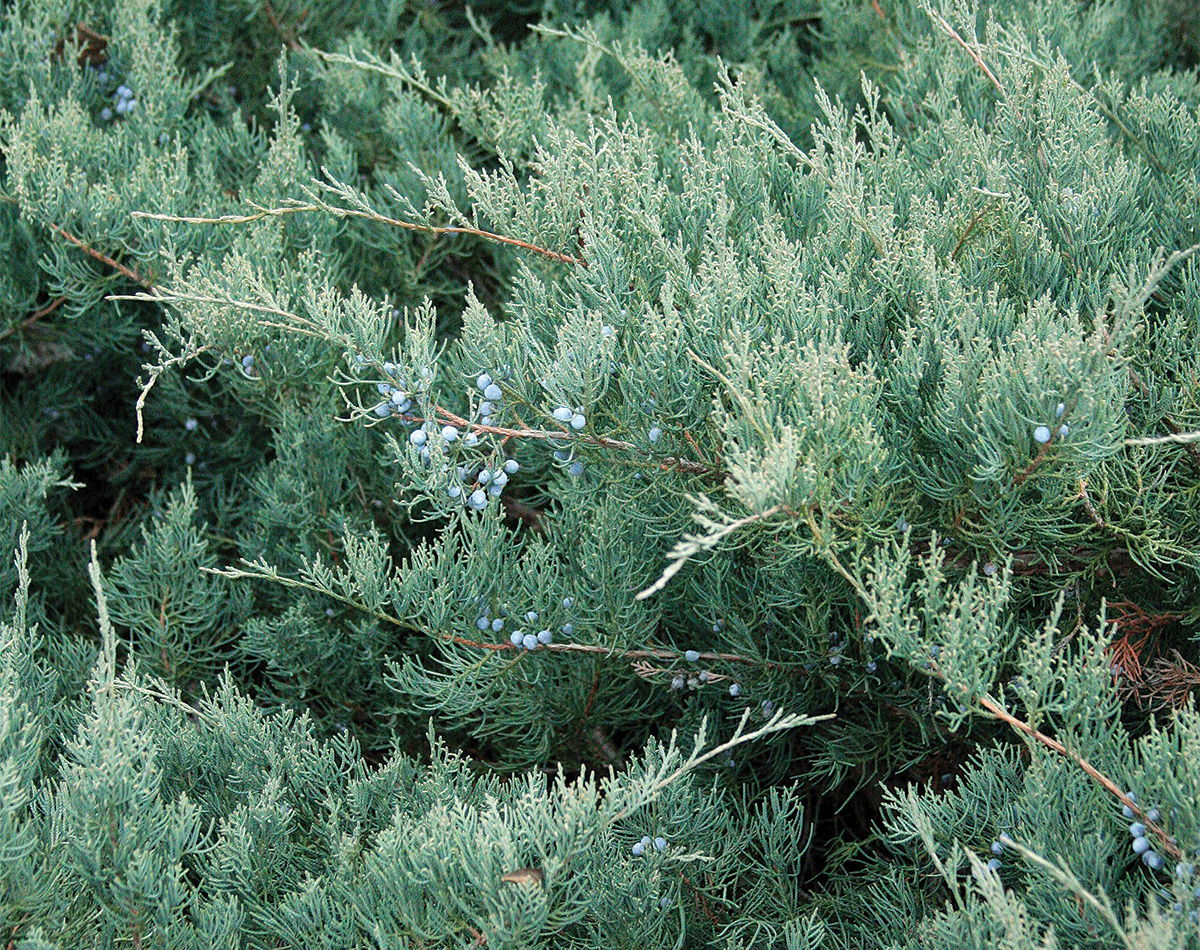
Name: Juniperus virginiana ‘Grey Owl’
Zones: 2–9
Size: 2 to 3 feet tall and 4 to 6 feet wide
Conditions: Full sun; well-drained soil
Native range: Eastern North America
‘Grey Owl’ eastern red cedar is a beautiful shrub in all four seasons. Its foliage, silver-blue to gray, makes a perfect backdrop for highlighting the spring blooms of other plants. Don’t be fooled by the delicate appearance of the foliage, as this is an extremely tough shrub. It’s tolerant of air pollution and drought and thrives in the presence of black walnut trees (Juglans nigra, Zones 4–9). Graceful arching branches create movement within the landscape during the winter months. The boughs are also adorned with profuse purple to blue berrylike cones in winter that are a favorite food source of cedar waxwings. During this time the branch tips may also take on lovely tones of purple. This shrub is generally slow growing; if pruning is needed, do so in winter and then incorporate the trimmings into wreaths or containers. Eastern red cedar tolerates a wide range of soil types of average fertility, including dry to rocky soil.
3. ‘Blue Hill’ wood sage

Name: Salvia × sylvestris ‘Blue Hill’, syn. S. × sylvestris ‘Blauhügel’
Zones: 4–8
Size: 1½ to 2 feet tall and 1 to 1½ feet wide
Conditions: Full sun; dry to medium, well-drained soil
Native range: Hybrid
I’m a huge fan of salvias due to their adaptability, long bloom time, and easy care needs, so it’s almost impossible to choose a favorite. One that’s near the top of my list is ‘Blue Hill’ wood sage. This salvia is extremely low maintenance, and the habit is always sturdy and consistent. Electric lavender to blue flower spikes bloom densely packed together and persist for weeks starting in late spring. After the flowers fade, cut back the entire plant to the ground and you will be rewarded with new foliage and a second bloom. Cut flowers and stems last long in arrangements, and the aromatic qualities of the foliage fend off unwanted garden critters. Conversely, ‘Blue Hill’ is highly desired by pollinators such as butterflies and hummingbirds. In my opinion, a garden is not complete without a salvia, and this one is a great choice.
4. ‘Gladiator’ allium
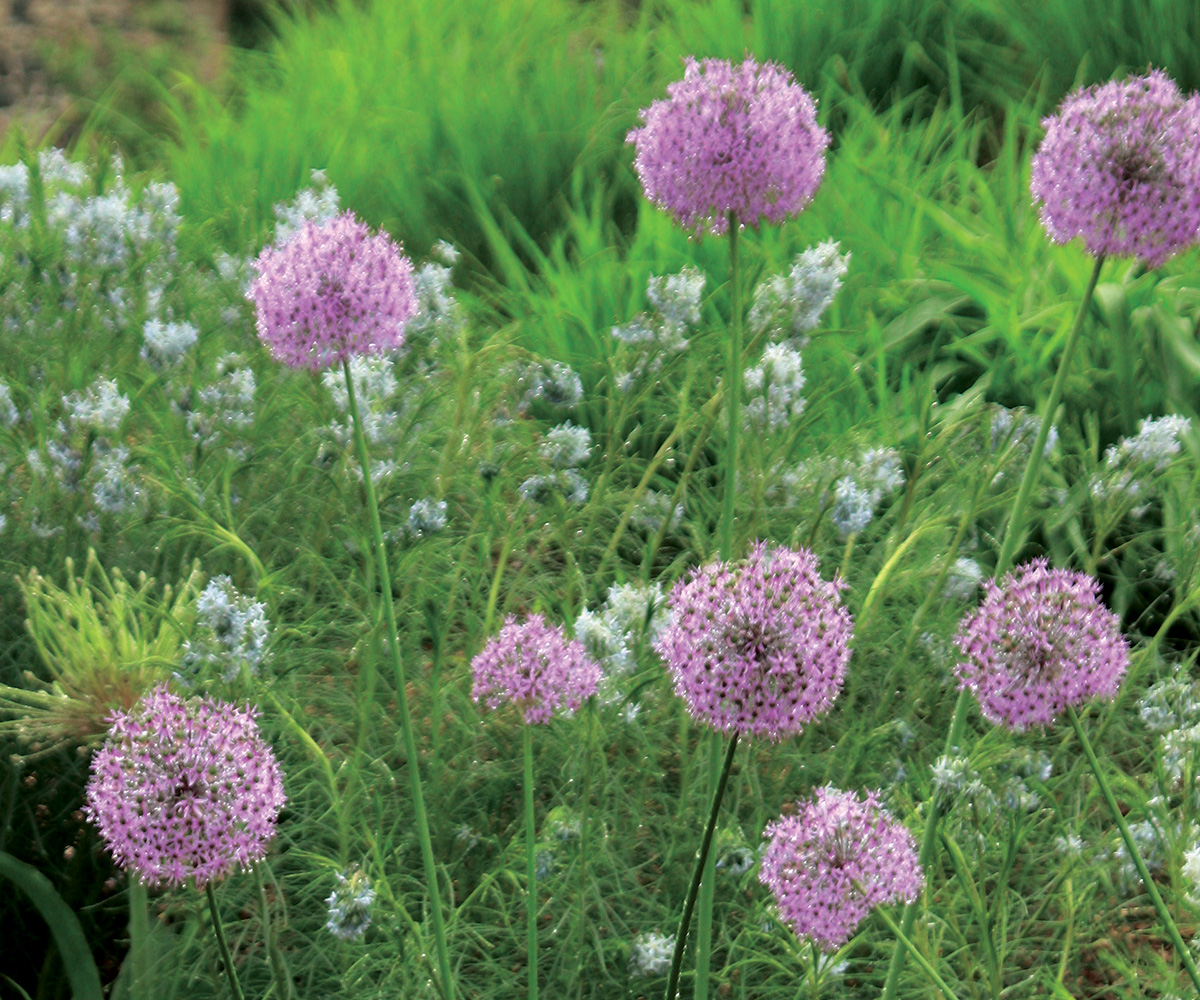
Name: Allium ‘Gladiator’
Zones: 4–9
Size: 3 to 4 feet tall and 1 foot wide
Conditions: Full sun; well-drained soil
Native range: Hybrid
Like the gladiators that performed in ancient Roman arenas, ‘Gladiator’ allium puts on a show. The softball-size purple to lavender flowers pack a punch when they bloom in late spring, and they add a whimsical charm to any planting combination. The unusual size and shape of the blossoms creates a striking architectural contrast with other plants. All parts of alliums have a strong fragrance of garlic, which keeps away deer, rabbits, and other garden pests. This fall-planted bulb is best utilized in masses among other perennials that can mask its foliage as it declines. ‘Gladiator’ also makes an excellent cut flower for arrangements. If it is left standing in the garden or border, its dried seed heads continue adding drama well into winter. This plant is adaptable to many soil types, including loam, clay, or sandy soil as long as there is good drainage.
Adam Glas is a garden supervisor and rosarian at the Scott Arboretum of Swarthmore College in Swarthmore, Pennsylvania.
View the full collection of regional planting plans and see the rest of issue 216.


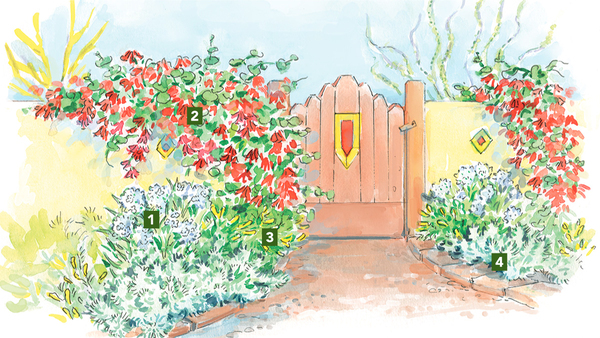















Comments
Log in or create an account to post a comment.
Sign up Log in